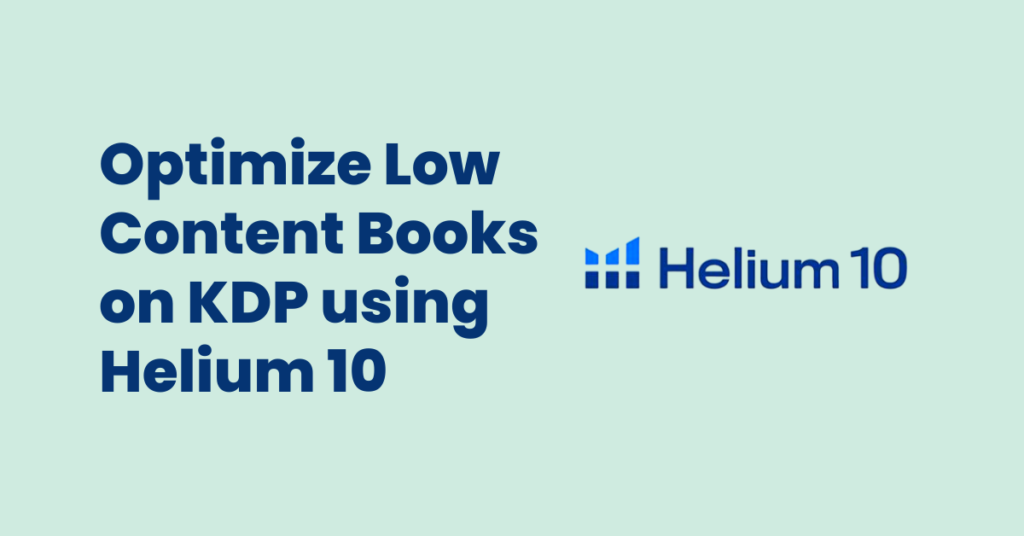How to Optimize Your Low Content Books on KDP using Helium 10
Are you struggling to get your low content books to rank on KDP? With the increasing competition, it’s becoming harder to stand out in the crowd. But fear not, as Helium 10 can help you optimize your books and improve your chances of success.
In this article, we’ll take a deep dive into the world of low content books on KDP and how Helium 10 can be used to enhance your visibility and sales.

KDP, or Kindle Direct Publishing, has revolutionized the way authors and publishers can get their books to the masses. With KDP, anyone can upload and sell their books on Amazon’s platform, reaching a global audience.
One of the most popular types of books on KDP is low content books. These are books that don’t have a lot of written content and are primarily used for activities such as coloring, journaling, or planning.
However, with so many low content books available on KDP, it can be tough to get noticed. That’s where Helium 10 comes in.
What is Helium 10?
Helium 10 is a suite of powerful tools designed to help Amazon sellers optimize their listings and increase their sales. It offers a range of features, including keyword research, product research, and listing optimization.
But how can Helium 10 be used specifically for low content books on KDP?
Using Helium 10 for Low Content Books on KDP
Keyword Research
One of the key ways to improve your visibility on KDP is to use the right keywords. Helium 10’s keyword research tool can help you identify the most relevant and profitable keywords for your low content book.
Simply enter a keyword related to your book, and Helium 10 will provide you with a list of related keywords, along with important metrics such as search volume, competition, and estimated revenue.
This information can help you choose the best keywords to include in your book’s title, subtitle, and description, which can help improve your rankings and attract more potential buyers.
Product Research
Another way to use Helium 10 for low content books on KDP is through product research. This involves analyzing the competition to see what’s working well and what’s not.
Helium 10’s product research tool allows you to see the sales and revenue estimates of your competitors, along with their reviews and ratings. You can also see what keywords they are using and how they have optimized their listings.
By analyzing this information, you can identify gaps in the market and opportunities to differentiate your book from the competition. For example, you may discover that there is a high demand for low content books on a specific topic, but there are few options available. This could be an opportunity for you to create a book that meets that need and stands out in the market.
Listing Optimization
Finally, Helium 10 can also help you optimize your listing to improve your rankings and conversions. This involves making sure that your book’s title, subtitle, and description are optimized with relevant keywords and persuasive language.
Helium 10’s listing optimization tool can analyze your listing and provide you with recommendations for improvement. This can include suggestions for better keyword placement, formatting, and calls to action.
By implementing these recommendations, you can improve your chances of appearing higher in search results and converting more visitors into buyers.
Conclusion
In conclusion, Helium 10 is a powerful tool that can help you optimize your low content books on KDP. By using its keyword research, product research, and listing optimization features, you can improve your visibility, sales, and revenue.
When it comes to low content books on KDP, standing out in a crowded market can be challenging. But with the help of Helium 10, you can gain a competitive edge and increase your chances of success.
So, if you’re struggling to get your low content books to rank on KDP, consider using Helium 10 to optimize your listings and improve your sales. With the right tools and strategies, you can turn your low content books into a profitable and successful venture.
Read More







